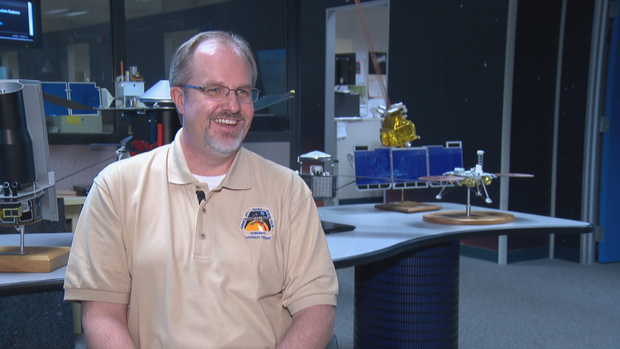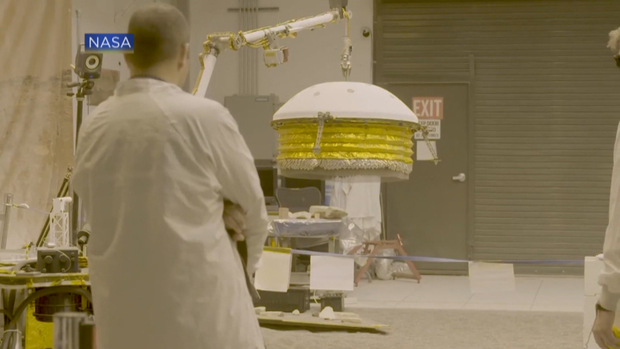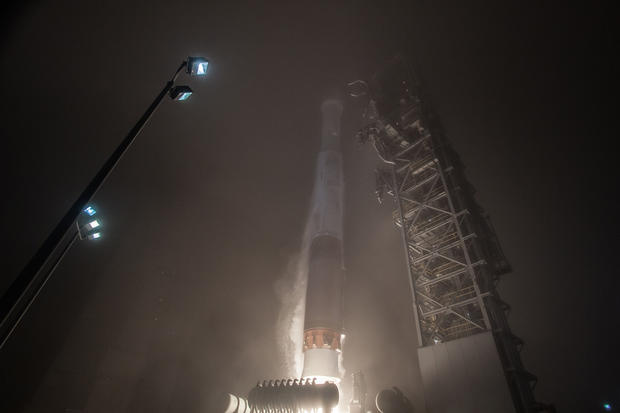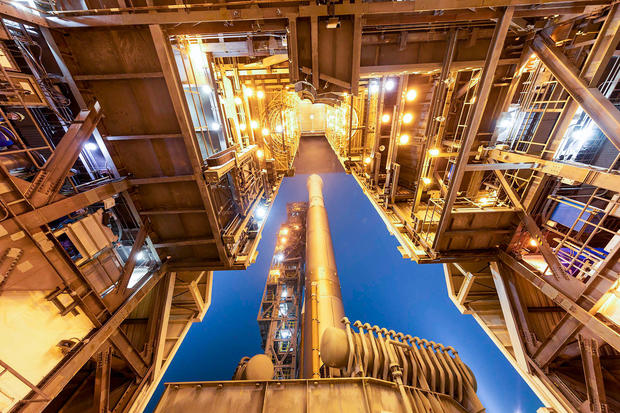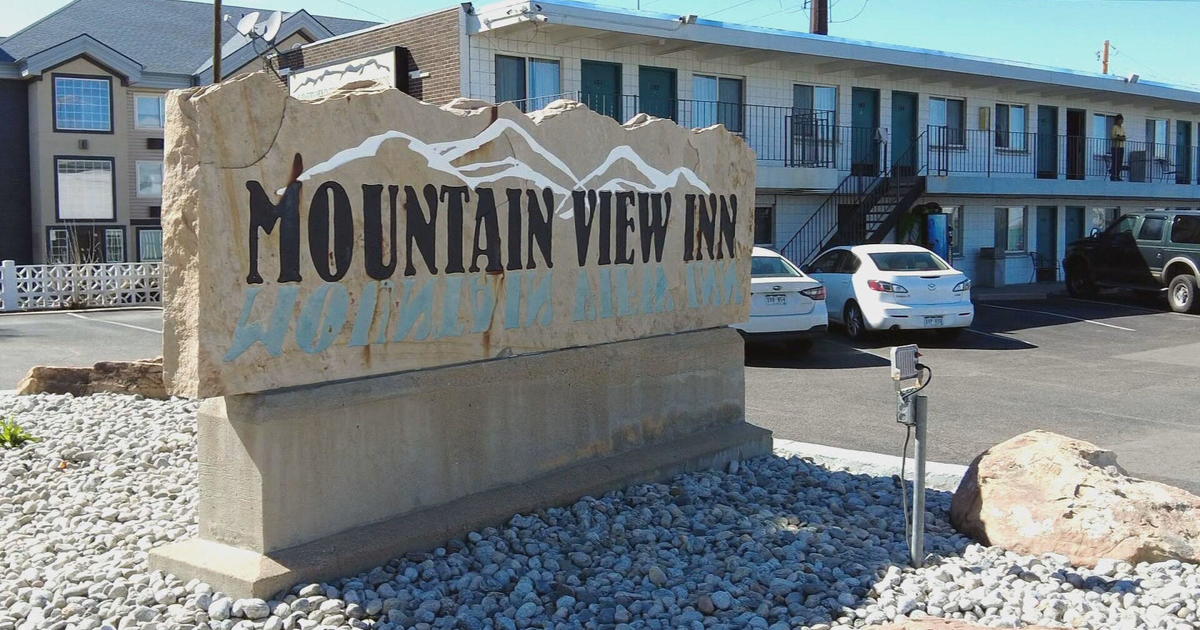Launch Of Colorado-Built InSight Lander To Mars Deemed Successful
CAPE CANAVERAL, Fla. (AP/CBS4) — A robotic geologist armed with a hammer and quake monitor rocketed toward Mars on Saturday, aiming to land on the red planet and explore its mysterious insides.
In a twist, NASA launched the Mars InSight lander from California rather than Florida's Cape Canaveral. It was the first interplanetary mission ever to depart from the West Coast, drawing pre-dawn crowds to fog-socked Vandenberg Air Force Base and rocket watchers down the California coast into Baja.
Team leaders are in Colorado. Lockheed Martin will guide the InSight until it reaches the Red Planet.
Dr. Steve Lee is a Mars scientist at the Denver Museum of Nature and Science. He was on hand in California watching the mission.
"How frequent are marsquakes? That's an important piece of information. You do not want to be setting down a habitat if it's the equivalent of being in California," Lee said.
The InSight Lander was built by Lockheed Martin at their labs in Centennial. After launch, Lockheed will take the reins, piloting the mission to Mars until it begins its high-risk programmed decent using a parachute and retro-rockets for a precise landing.
A team of space scientists, and engineers, gathered to watch the launch of the project they helped develop.
"We just had a very successful launch for the next mission to Mars, said Pieter Kallemeyn, Spacecraft Team Lead for the InSight Mission. "Everyone was really happy. (A) big sigh of relief."
Kallemeyn, and his team, assembled most of the InSight rover in Colorado, which had two tools assembled abroad.
"These two instruments will help us measure the seismic activity of mars. It will literally take the heartbeat of mars," Kallemeyn said.
One device will measure the temperature of the surface, as it burrows five meters in to the soil.
Kallemeyn said thousands of hours of work went in to the project, which made watching it launch in to space on a rocket stressful.
However, he said the most nerve-wracking part of the mission comes in November.
"It is difficult to land on Mars," Kallemeyn said.
"This is a big day. We're going back to Mars!" NASA's new boss, Jim Bridenstine, said following liftoff. "This is an extraordinary mission with a whole host of firsts."
The spacecraft will take more than six months to get to Mars and start its unprecedented geologic excavations, traveling 300 million miles (485 million kilometers) to get there.
InSight will dig deeper into Mars than ever before — nearly 16 feet, or 5 meters — to take the planet's temperature. It will also attempt to make the first measurements of marsquakes, using a high-tech seismometer placed directly on the Martian surface.
"That's the real payoff of this whole mission and that's still lying ahead of us," said the mission's chief scientist, Bruce Banerdt of NASA's Jet Propulsion Laboratory in Pasadena, California.
Although fog prevented Banerdt from seeing the liftoff of the $1 billion U.S.-European mission, he heard the roar of the rocket and all the blaring car alarms it set off.
"It was just an incredible moment," Banerdt told The Associated Press by phone. Despite the challenges still ahead, "I think I can bask in a little bit of satisfaction and just feeling like we really accomplished something today."
Using a parachute, and a set of thrusters, the InSight Mission's final descent to the surface of Mars will be navigated by Kallemeyn and his team in Colorado, 33 million miles away from Mars.
The team has a 10 minute window to complete the landing, with no margin of error, in real-time.
"The entry conditions have to be as perfect as possible," Kallemeyn said.
Kallemeyn said their device will help humans understand how the planets were created, by starting with the surface of Mars.
"Overall, it just increases our scientific knowledge of the solar system, which I think is great for everyone," Kallemeyn said.
Besides InSight, the United Launch Alliance's Atlas V rocket gave a lift to a pair of mini test satellites, or CubeSats, that are trailing InSight to Mars to serve as a potential communication link. Nicknamed WALL-E and EVE from the 2008 animated movie, the twin briefcase-size spacecraft popped off the rocket's upper stage in hot pursuit of InSight, as elated launch controllers applauded and shook hands following the morning's success.
NASA hasn't put a spacecraft down on Mars since the Curiosity rover in 2012. The U.S., in fact, is the only country to successfully land and operate a spacecraft at Mars. It's tough, complicated stuff. Only about 40 percent of all missions to Mars from all countries — orbiters and landers alike — have proven successful over the decades.
If all goes well, the three-legged InSight will descend by parachute and engine firings onto a flat equatorial region of Mars — believed to be free of big, potentially dangerous rocks — on Nov. 26. Once down, it will stay put, using a mechanical arm to place the science instruments on the surface.
Banerdt said Mars is ideal for learning how the rocky planets of our solar system formed 4.5 billion years ago. Unlike our active Earth, Mars hasn't been transformed by plate tectonics and other processes, he noted. InSight might also help explain why some planets — like ours — went on to develop life, while others did not.
Over the course of two Earth years — or one Martian year — NASA expects InSight's three main experiments to provide a true 3-D image of the interior of Mars. Scientists know Mars has an iron core and a crust, but beyond that, the inside is "basically, completely unknown," said Banerdt.
The lander is equipped with a seismometer for measuring marsquakes, a self-hammering probe for burrowing beneath the surface, and a radio system for tracking the spacecraft's position and planet's wobbly rotation, thereby revealing the size and composition of Mars' core.
"InSight, for seismologists, will really be a piece of history, a new page of history," said the Paris Institute of Earth Physics' Philippe Lognonne, lead scientist of the InSight seismometer.
Problems with the French-supplied seismometer kept InSight from launching two years ago. California was always part of the plan.
NASA normally launches from Cape Canaveral, but decided to switch to California for InSight to take advantage of a shorter flight backlog. This was the first U.S. interplanetary mission to launch from somewhere other than Cape Canaveral.
The fog ruined the view for those gathered at Vandenberg along the central California coast. But it was a marvelous sight farther south. The rocket's bright orange flame was visible for some time as it arced upward across the dark sky west of greater Los Angeles.
Not even two weeks on the job, NASA's new administrator, Bridenstine, observed the launch on monitors at space agency headquarters in Washington.
"I can't think of a better way to start my day!" Bridenstine tweeted.
United Launch Alliance's president, Tory Bruno, also took to Twitter to celebrate. "Next stop: Mars."
By MARCIA DUNN
(© Copyright 2018 CBS Broadcasting Inc. All Rights Reserved. The Associated Press contributed to this report.)

